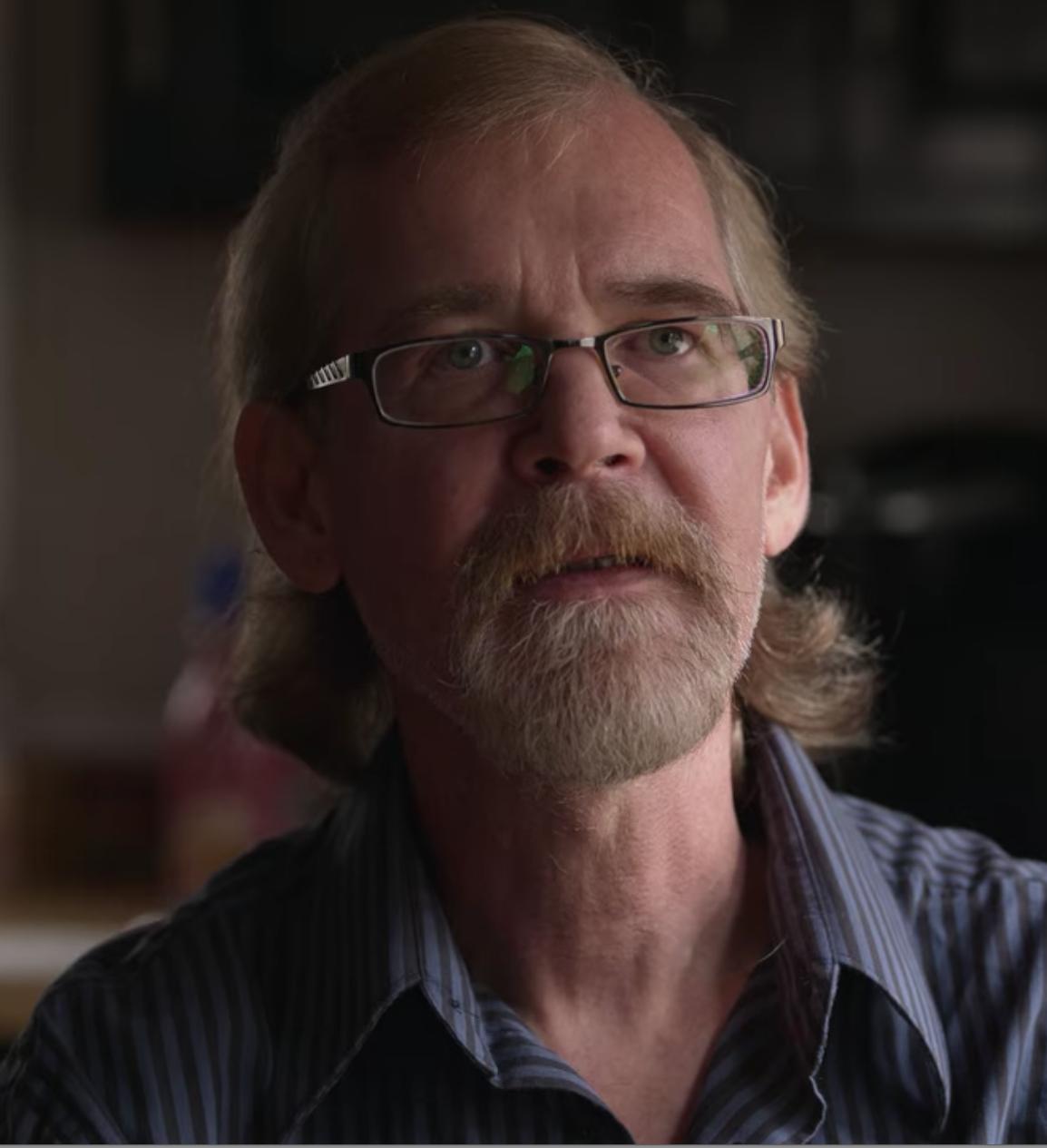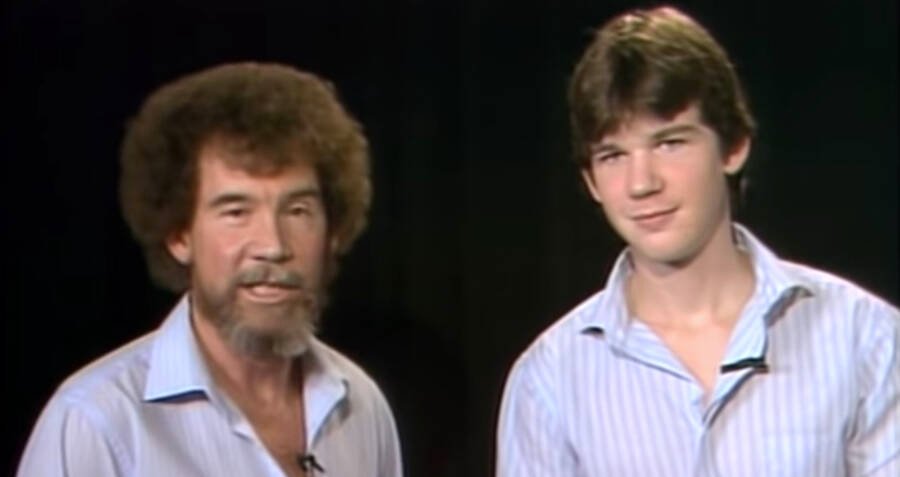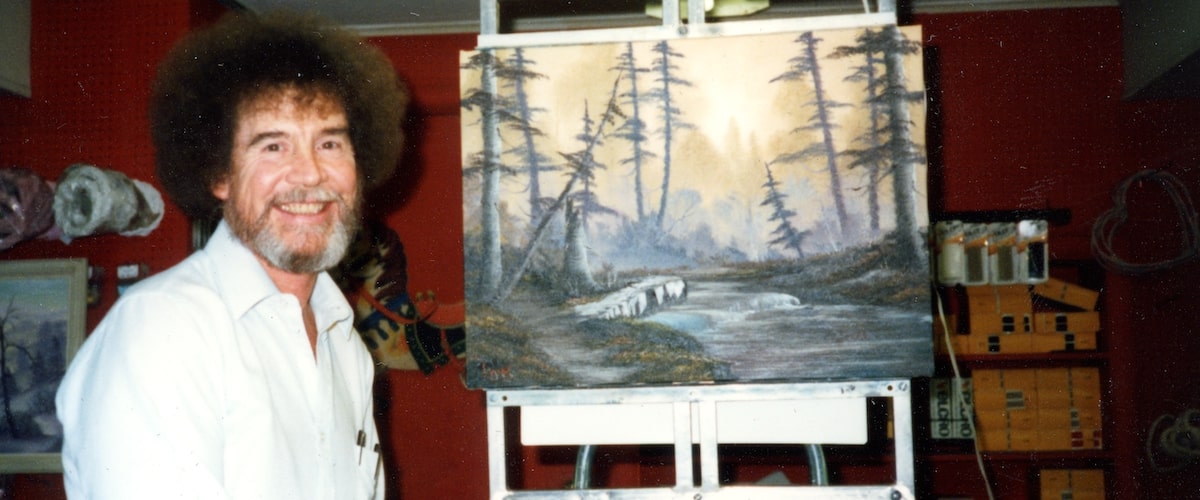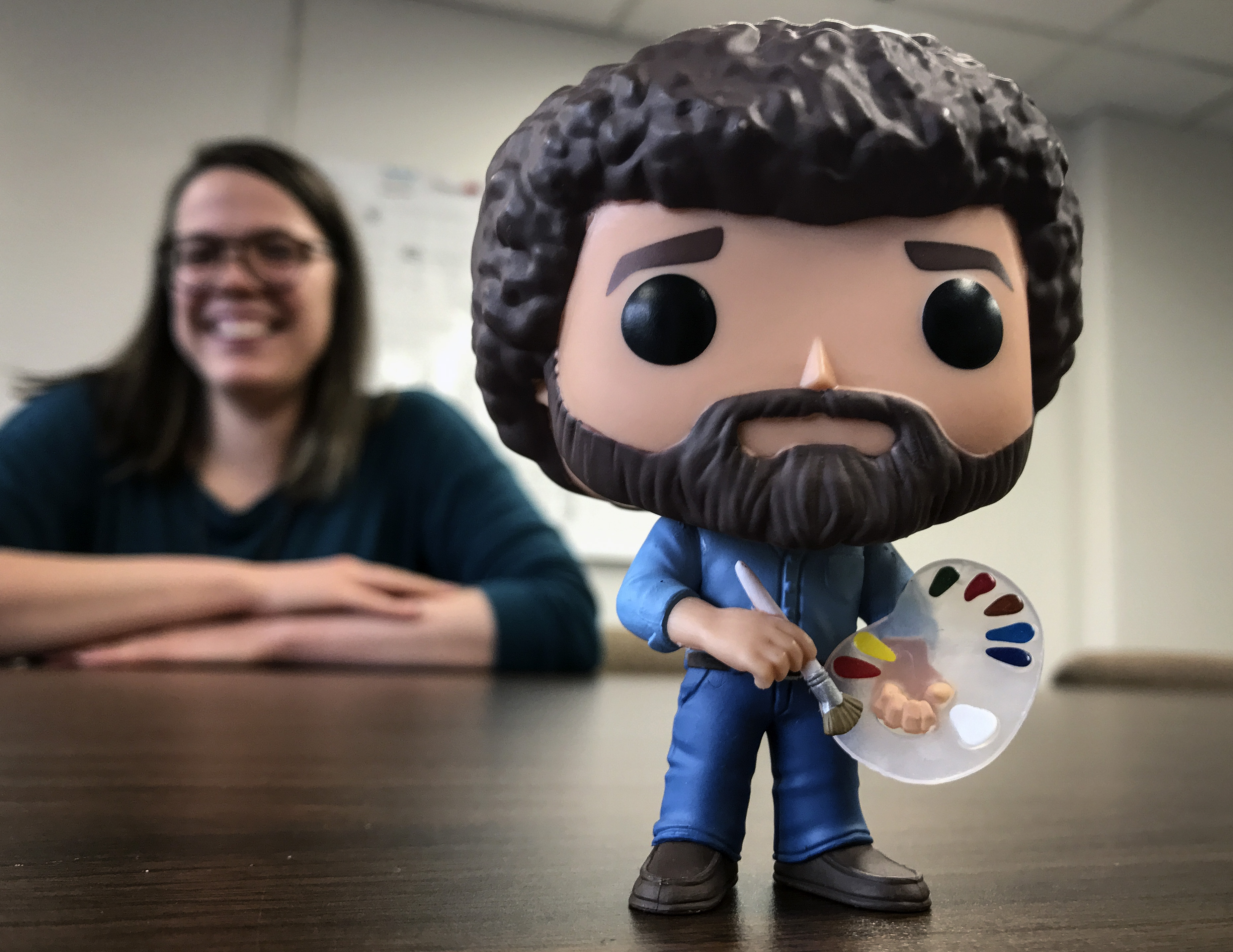Steve Ross, The Son Carrying His Father’s Legacy
Following his father's death in 1995, Bob Ross' son Steve Ross struggled to paint. Now, he's painting once again, imparting his knowledge to the new generation of painters.
Author:Alex MercerReviewer:Nathanial BlackwoodJun 14, 2022102 Shares1.9K Views

Following his father's death in 1995, Bob Ross' son Steve Rossstruggled to paint. Now, he's painting once again, imparting his knowledge to the new generation of painters.
Early Life
Robert Stephen Ross, the son of Bob Ross and Vivian Ridge, was born on August 1, 1966, and has followed in his father's footsteps as a painter by appearing as a guest star on the PBS series The Joy of Painting.
Steve and his father grew closer as a result of a tragedy. Steve's father, Bob Ross, was a drill sergeant in the United States Air Force who raised him as a single parent when his mother died when he was a little boy. The two of them turned to paint as a way of dealing with their loss, and it turned out to be a lifetime pastime for them.
It was a recreational activity that would ultimately shape the path of their entire lives. After leaving the Air Force in 1978, Bob Ross began working with brushes and a palette of paint. He left Steve in the care of his second wife, Jane, while he flew across the nation to study oil painting with a professional oil painter.
Following a brief apprenticeship with Austrian "wet-on-wet" painter Bill Alexander, Bob Ross launched his own television series. The Joy of Painting went off like a rocket and never lost speed as a result of his tranquil manner and soothing voice.
Steve On The Joy Of Painting
Throughout the process, Steve, who had been painting for as long as he could remember, was there to support his father's business venture. Steve made an appearance on the final episode of the first season of The Joy of Painting, while the show was still in its infancy.
In the video posted on Youtube, Bob introduces his son, Steve, as a teacher who has been a passionate painter his whole adult life and sold his first artwork when he was 12 years old. According to Steve, there is "nothing better in the world" than being a painting instructor. He certainly has his father's style — and the same peaceful, soporific voice.
He also painted 12 more original paintings for the show in addition to his appearance in this Q&A-type episode. Steve had grown in stature and personality by the time he returned to The Joy of Painting. He stood tall, even taller than Bob Ross, who was already imposing. Completely at ease, he demonstrated to onlookers how to paint landscapes that rivaled those of his father.
Nonetheless, Steve once resisted taking on his father's role as heir apparent, despite the fact that this was something his father desired sincerely and openly. “As children, we all yearn to defy our parents and spend time with our peers.” Vanity Fair reported that Steve explained that as he grew older, he realized that his parents were pushing him to be bigger than himself because they wanted the best for him and his sibling.
What Happened To Bob Ross's Son?
Steve's mother had passed away while he was a child. He would also lose his father, who died in 1995. Bob Ross was diagnosed with lymphoma that year, a rare and severe form of illness that left him only a few months to live. He died a few months later.
The same way that Bob Ross had left the Air Force to care for Steve's mother, Steve returned to Florida to be with his father after a period of time away. At the funeral home, he observed as his normally calm and polite father was forced to participate in verbal shouting matches with business associates who were vying to take over the family firm after his passing.
In addition, following Bob Ross' death, Steve fell into severe despair that lasted for several years before lifting. He explained in The Daily Beast that he was on the verge of getting behind the wheel of his automobile on the highway, intending to deliberately cause an accident in order to “end the misery once and for all.”
Steve adored painting just as much as his father did, but he couldn't bring himself to continue because painting was so deeply associated with the memories of his father. Despite being pursued by journalists who wanted to hear his side of the tale, he stayed out of the spotlight for more than 15 years, leading a private life away from the press.
He told Vanity Fair that his father was "an artist, a man of such integrity, who I profoundly miss," and that after losing him and amid the intellectual property rights issue, he "had lost trust in the world and the decency of people" and "gave up painting for a time." According to The Daily Beast, he struggled to paint and teach while depressed. In May, he told the outlet, "I didn't understand that people missed me or wanted to have me do this again." He's now returned to art and teaching. He told Vanity Fair, "Painting is something in my DNA."
Where Is Steve Now?
Bob Ross' son would not publicly appear in front of an easel again until 2019, over a quarter-century after his father's death. Steve decided to do something he'd never done before: organize a painting course with Dana Jester, a fellow certified Bob Ross instructor and longstanding friend. Steve and Dana opted for a run-down structure on the outskirts of Winchester, Indiana. Dozens of painters and hundreds of fans showed up to see them paint, much to their surprise. The event was streamed live online, and it went viral. Bob Ross's successor had returned.
Steve Ross has done other workshops in Tennessee and Colorado since that inaugural workshop. According to Dana's Instagram, the Bob Ross instructors continue to teach workshops in Winchester, Indiana, just an hour away from the location of The Joy of Painting.
Steve told The Daily Beast, "I didn't realize people missed me or wanted me to do this again." “I always knew, but maybe I didn't want to know,” she says. Perhaps I've reserved the right to be ignorant.”
The artist responded, "It's like the first time I've had the sun on my face in a thousand years," when asked how it felt to be able to teach painting once more.
The Documentary
Bob Ross: Happy Accidents, Betrayal, and Greed, a new Netflix documentary, examines the life and legacy of Bob Ross, focusing on the legal battle over his name and likeness. When the eponymous painter died in 1995 after more than a decade as presenter of The Joy of Painting, he desired that his son, Robert Stephen Ross, also known as Steve, succeed him. However, Bob Ross Inc. (BRI), which is owned and operated independently by Annette and Walt Kowalski (and their daughter Joan), controls the Ross name, brand, and artwork. Steve goes into length in the documentary about what he perceives to be a betrayal of his father's intended legacy. (Neither Annette nor Walt Kowalski appear or reply to his allegations.) However, he continues to work as an artist – more prolifically now that he has reached an agreement with BRI.
According to the documentary and articles on the subject, BRI attempted to persuade Bob to sign over his work as well as any future earnings derived from his name and likeness to the company. Before his death, Bob and the Kowalskis were embroiled in a vicious legal struggle, and he attempted to leave his estate to both his half-brother Jimmie and his nephew Steve in his last will and testament. Following that, BRI filed a slew of lawsuits to protect its intellectual property rights — and allegedly threatened to sue Steve. In an interview with The Daily Beast in May, he revealed that he received a phone call from Annette two days after Bob's death in 1995, in which she informed him that manufacturing Bob Ross anything "connected to art or painting" was strictly prohibited.
He claims she answered, "You can never ever build those, distribute those, create a business around those — nothing." “However, you are free to do anything you want that isn't related to painting or art. Bob Ross pickles, Bob Ross shoes, Bob Ross everything. However, you are not permitted to use the Ross name on any painting or art-related product for the rest of your life.”
In the trailer, Steve states, "I've been wanting to get this story out for all these years."
In the documentary, Steve claims that he has never seen any of BRI's revenues and that it was only after years of isolation and sadness that he decided to sue the firm. After a judge ruled that Bob had relinquished BRI his intellectual property rights while he was alive, Bob lost his lawsuit in 2018. However, thanks to a subsequent settlement, Steve was able to continue to create a firm under his own name. He said he felt rejuvenated thereafter. Steve continues to host workshops and demos, and he praises the outpouring of support he's received. He claims that by speaking with Netflix, he is also bringing to light what happened after his father died.
Why Can't You Buy A Bob Ross Painting?
Ross's life shifted dramatically when he discovered art.
He began painting landscapes on gold mine pans and selling them at small markets in Alaska after being inspired by television painter Bill Alexander.
His earnings from painting quickly eclipsed those from the military. As a result, he returned to Florida in 1981, learned under Alexander, and earned certification as a painting instructor. Now, here's where things took a whole different direction for Ross:
- The show, The Joy of Painting, which aired between 1983 and 1994, was a huge hit, and it was broadcast on approximately 300 stations to an audience of more than 80 million people each day.
- They were given a chance by a PBS executive.
- They pooled their life fortunes and formed Bob Ross, Inc., with the goal of turning Ross into a television star. They were successful.
- Annette Kowalski, one of his classmates, was "mesmerized" by the jovial painter and urged him to set out on his own after graduating from art school.
With a relaxing demeanor, engaging commentary, and the odd appearance of his pet squirrel, Peapod, Ross painted a landscape from beginning to end in each 27-minute episode.
Ross was not compensated for his appearances. Although he was a partial owner of Bob Ross Inc., the company made use of the platform to sell paints, art materials, workshops, instructional films, and other products. It has grown to a $15 million-per-year ($29 million-per-year) business by 1991.
The paintings themselves, on the other hand, were essentially an afterthought.
Ross shot 381 episodes of The Joy of Painting during the course of his career. To prepare for each episode, he painted three different versions of the same artwork: one before filming began, another during production, and a third after the show was over.
However, his work on television was just the tip of the iceberg in terms of his overall contribution.
Before he became famous, he sold tens of thousands of paintings in his own Alaska. Even though he was well-known, he continued to paint practically every day in between tapings at seminars, events, and charity auctions.
It's estimated that Bob Ross produced over 30,000 paintings throughout his career. That's over three times the output of Pablo Picasso, who has been deemed the most prolific painter in history.
Collectors and fans have been clamoring for years to own a piece of Bob Ross history. A number of art dealers mentioned that demand for his work is exceptionally strong right now.
Ross paintings, on the other hand, are similar to diamonds in that they are abundant in quantity but scarce on the open market.
Bob Ross has never sold at any of the major auction houses, including Christie's, Sotheby's, and Phillips. Craigslist comes up with a goose egg. A search on eBay reveals only three sales in the last six months, two of which are of questionable origin.
Where have those 30,000 paintings gone?
Bob Ross, Incorporated
Ross's deal with Bob Ross, Inc. stipulated that Ross's work for TV was considered to be a type of work-for-hire, therefore giving the corporation ownership of his paintings.
Annette Kowalski and her husband, Walt, became the sole owners of Bob Ross, Inc. (and consequently the paintings) after Ross died in 1995.
In the company's unassuming Herndon, Virginia, office building, 1,165 Bob Ross originals sit in cardboard boxes worth millions.
Annette Kowalski's daughter, Joan Kowalski, is the current president of Bob Ross, Inc., and she says that the corporation had never given the paintings much thought.
With a chuckle, she explains, "The paintings have always just sort of been here." “We were a little behind the curve... It had never occurred to us that anyone may be interested in them.”
People who want to acquire the paintings frequently contact the company, which can be reached at 1-800-BOB-ROSS.
However, they are not for sale.
“Our sole mission,” Kowalski explains, “is to preserve Bob Ross' mythological wonderment.”
Bob Ross, Inc. isn't interested in selling the paintings in part because it has considerably more valuable assets on hand, such as Bob Ross's intellectual property.
Ross's image and name are frequently used to sell millions of dollars worth of Bob Ross-themed items and instructional courses, which gives the company the ability to assert 154 copyrights and several trademarks on his likeness.
Bob Ross, Inc. occasionally rents out a few paintings to galleries and exhibitions across the country:
- The Bob Ross Art Workshop & Gallery in New Smyrna, Florida, has 54 paintings on display.
- Minnetrista's Bob Ross Experience in Muncie, Indiana, has 27 paintings.
- The Smithsonian National Museum of American History in Washington, DC, owns four of the works.
However, this only provides a partial solution to the puzzle. What about Ross's other works of art, which he donated or sold throughout the course of his career?
According to Jessica Jenkins, VP at the Minnetrista exhibit and Bob Ross researcher, many more Ross paintings are actually hanging in US living homes.
“He was always willing to gift paintings to charities or sell them at fair prices,” she says. “Many owners have had them for decades.”
For years, WIPB-TV in Muncie, Indiana, where Ross filmed most of his shows, auctioned off a Ross painting as part of its annual fundraiser.
They were always "the most anticipated item," according to the local newspaper, The Star Press, outranking items such as tickets to Cancun, diamond necklaces, rare Beanie Babies, and basketballs autographed by Magic Johnson, among other things.
Lori Georgi, a director of WIPB, adds, "We still have four of his paintings hanging here at the station." “People travel all the way from England simply to see them.”
As an amateur painter, Ross sold tens of thousands of paintings for pennies on the dollar before he became a television celebrity. Larry Walton, 82, of Crosslake, Minnesota, got his original Bob Ross in this manner.
In 1980, while working as a flying instructor in Alaska, he paid $60 for an unidentified "peculiar artist" to paint a scene with mountains and blue northern lights at an Anchorage fair.
The painting had been untouched in the garage for many years until his son discovered a signature in the corner, who, according to his son, was a big follower of Bob Ross's YouTube videos.
To sell the property, the couple went to a Minneapolis, Minnesota-based art gallery and dealer, Modern Artifact.
In an interview with The Hustle, Ryan Nelson, the gallery owner, claims that he's been buying and reselling Bob Ross paintings for the past decade. Using SEO and placing “wanted” advertisements in local newspapers around where Ross spends time, Tyler finds potential sellers just like Mr. Walton.
The artist comments in an email that "we acquire and sell more of his paintings than any gallery on the earth." We offer more money to buy his works in order to maintain our position than most people are willing to risk.
Nelson swapped the artwork on eBay for a little profit after the Waltons sold it to the gallery for $10,000.
Unlike traditional art collectors, those who own Bob Ross paintings are typically average people who have no idea what they've got on their hands, according to the artist.
“The majority of the families who own these artworks are not millionaires,” he explains, “and the money has a significant impact on their lives.”
In total, Modern Artifact has sold 34 Bob Ross paintings.
Nelson wouldn't reveal the sale amounts but said they regularly exceed $10,000. A rare ocean scene is presently marketed for $94k. It's odd that Bob Ross paintings sell for so much. After all, Ross could paint a painting in about 30 minutes (da Vinci took 4 years to complete the Mona Lisa), and his work was designed to be easily copied. But Nelson attributes the exorbitant costs to a mix of economic and social capital. Supply and demand: Bob Ross paintings are hard to come by, and demand exceeds supply. “Their widespread recognition makes them wonderful conversation starters.”
According to Mearto's managing director Lindsey Bourret, the fair market value of a Ross artwork is between $2k and $4k. However, the fact that his art incorporates elements of pop culture increases demand.
She describes Ross's work as a "hybrid between fine art and entertainment memorabilia."
Some customers are prepared to pay a premium for that.
Several six-figure works of art are owned by a collector who did not desire to be identified due to privacy concerns. However, her "crown gem" is an original work by Bob Ross. She tells The Hustle that she's had more guests compliment her Bob than her Picasso. "It's all about the story," says the author.
Conclusion
It is because Bob Ross himself never wanted his paintings to be commodities that there aren't any available for sale.
Ross saw value in the process, not in the final product.
“He was about as indifferent in the artwork as one could be,” Kowalski explains. “For him, it was about the journey — he desired to educate others. The paintings were merely a vehicle for accomplishing that.”

Alex Mercer
Author
Alex Mercer is a seasoned author and analyst specializing in wealth research, with a keen focus on evaluating the net worth of individuals across various industries. With over a decade of experience in financial analysis and wealth assessment, Alex has developed a nuanced understanding of the factors that contribute to an individual's financial status, from investments and assets to market trends and economic policies. His work involves in-depth reviews and analyses, providing insightful observations on wealth accumulation, management strategies, and the socio-economic implications of wealth distribution.
Throughout his career, Alex has become known for his ability to distill complex financial data into understandable and engaging narratives, making the subject of wealth and net worth accessible to a broad audience. His expertise is not just in numbers but in telling the stories behind them, highlighting the journeys, strategies, and decisions that lead to financial success or challenges. Alex's contributions to the field of wealth research are valuable resources for anyone looking to understand the dynamics of wealth in today's world, offering a unique perspective that bridges the gap between financial analysis and human interest.

Nathanial Blackwood
Reviewer
Nathanial (Nate) Blackwood is a distinguished financial journalist with a decade of experience in net worth analysis. He holds an Economics degree from the University of Finance and a Data Analysis certification, enabling him to blend thorough insights with engaging storytelling. Nate is known for making complex financial information accessible to a wide audience, earning acclaim for his precise and reader-friendly analyses. Beyond his writing, Nate is dedicated to financial literacy, actively participating in educational forums and workshops.
He is the founder of PureNetWealth, a platform that demystifies the financial achievements of public figures by exploring the strategies and decisions behind their fortunes. Nate's work bridges the gap between intricate economic concepts and the general public, inspiring a deeper understanding of wealth dynamics. Follow Nathanial Blackwood for essential insights into the financial narratives shaping our world.
Latest Articles
Popular Articles


